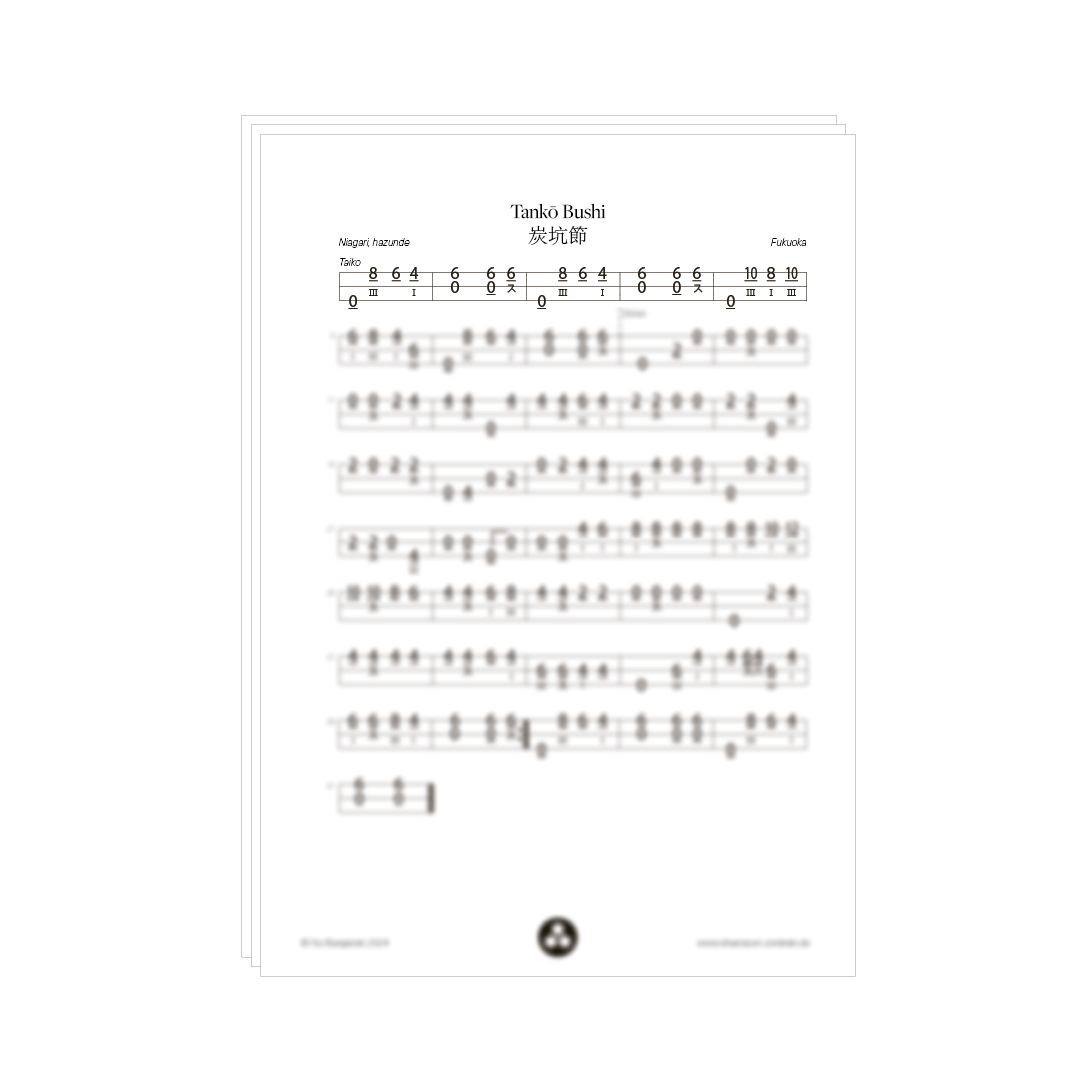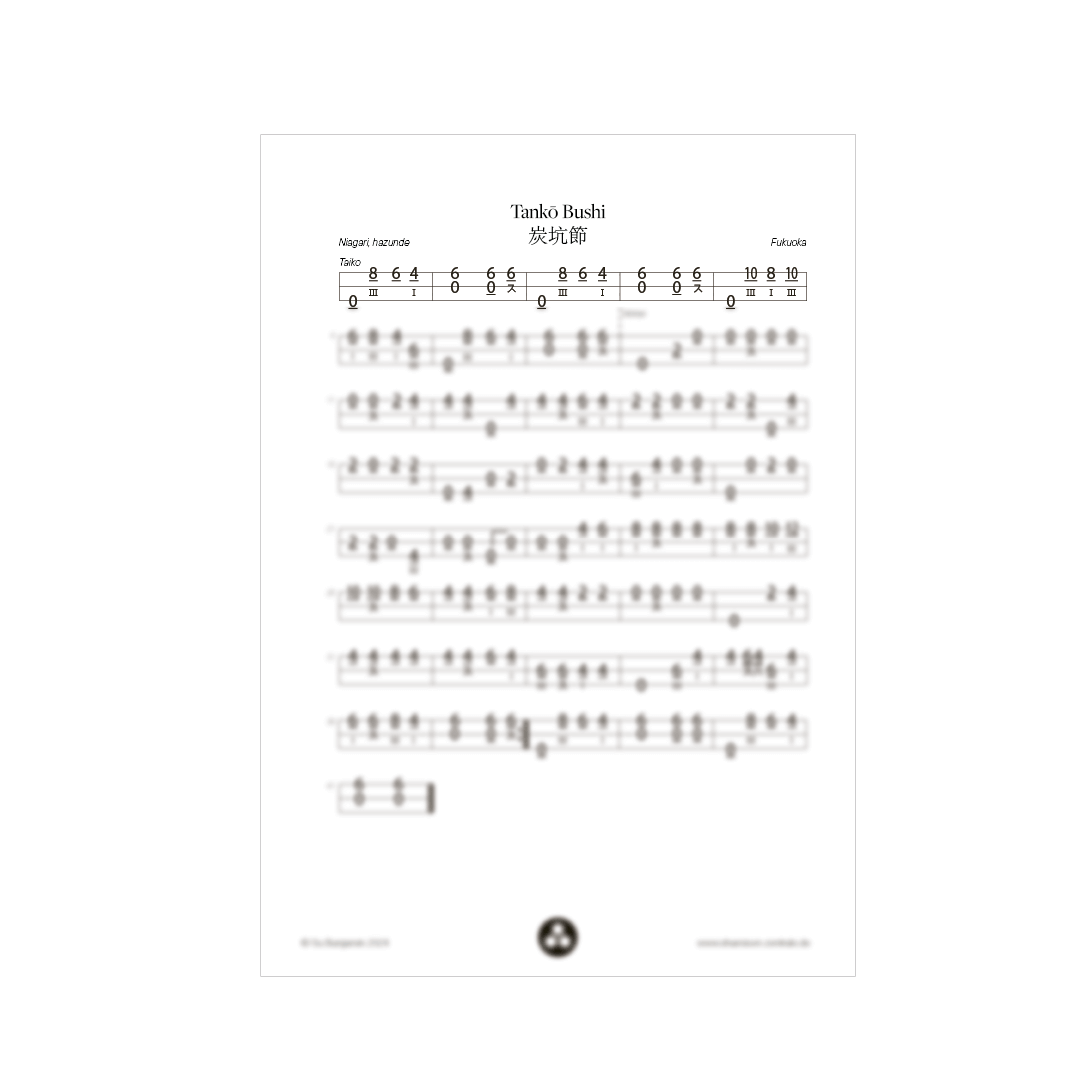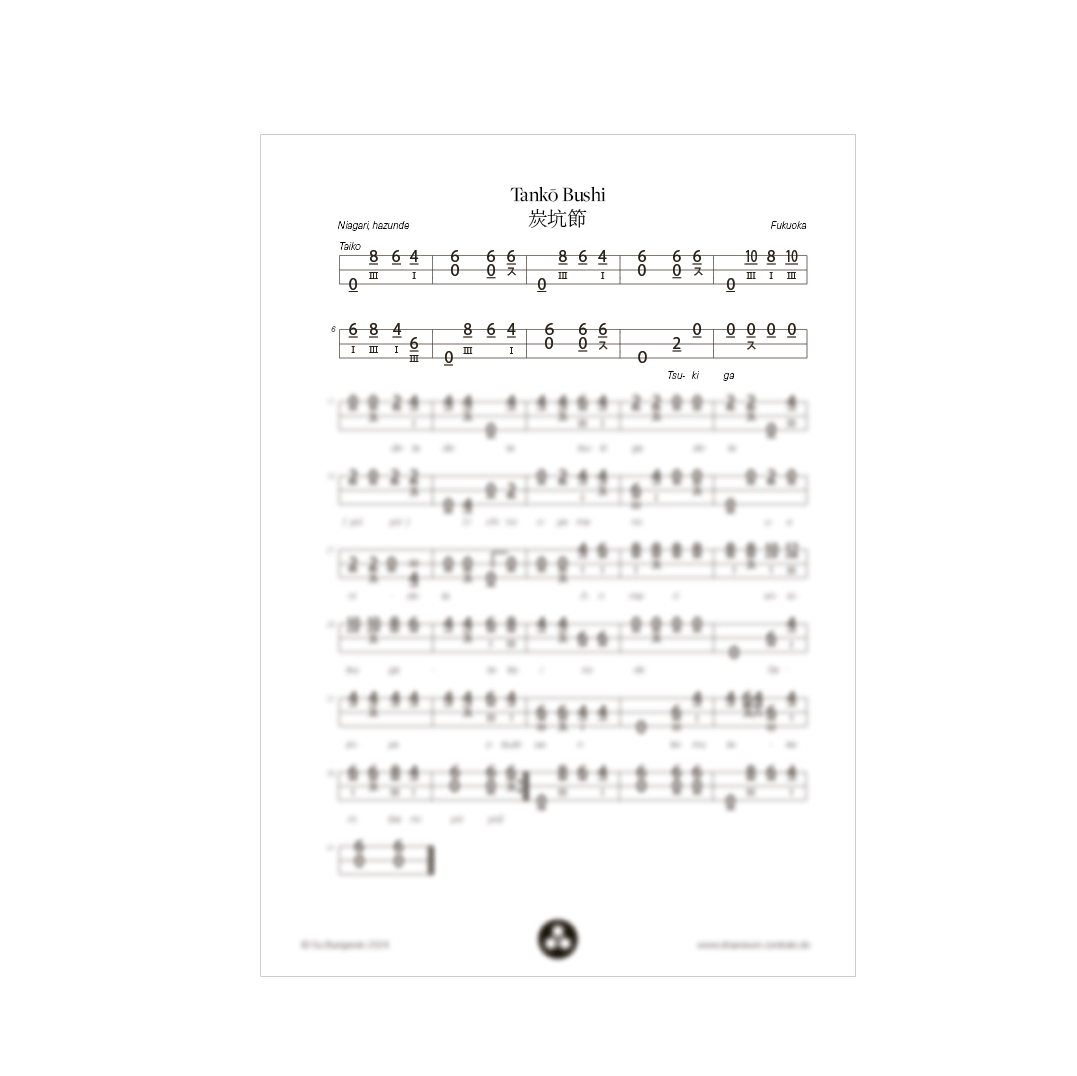Tankō Bushi
Upbeat Obon dance song for shamisen.
This is what you’ll get:
- 3 pdfs with 3 pages total: tabulature notation with and without lyrics, plus lyric overview sheet
- 3 mp3 files: mp3 play along files in three speed versions
Song specifications:
- advanced beginner to intermediate level
- niagari tuning (C-G-C)
- hazunde (shuffle) rhythm
2,25 €
Details
Get the notation for the fun and popular Obon song “Tankō Bushi” with and without lyrics plus super useful play along files to help you learn and practice the song!
The notation comes in two different versions: the normal version without lyrics, and the full version with lyrics for the first verse. There’s an additional lyrics sheet for more singing fun!
The mp3 play along files come in three different speed versions: 70 bpm, 90 bpm, and 105 bpm.
You can download the files from your customer account page after the purchase – a link will be provided in the order confirmation e-mail.
Wanna have a short listen to see if you like the tune? Here’s the beginning of Tanko Bushi:
About the song:
Tankō Bushi is a super popular traditional Japanese song from Fukuoka Prefecture. It has a very catchy melody and fun uplifting vibes. “Tankō” means “Coal Mining” and “Bushi” means “Song. It is a song about work at a coal mine, and the easy to learn dance choreography mimics movements and actions from that work environment (pushing a cart, shoveling, etc.)
As every folk song, it comes in countless variations. This version is written out for shamisen in bunkafu (tabulature) notation.
What makes the song extra catchy is the special rhythm “hazunde”. You might know it as “swing” or “shuffle” rhythm. I like to call it heartbeat-rhythm as it alternates between long and short pulses. If you have never heard of “hazunde” before, I recommend checking out my explainer video 🙂
There’s lots of upstrokes (sukui), but they’re slow and easy to do. There’s one upstroke-and-pull-off-combo (sukui-hajiki-combo スハ) to add an exciting sparkle near the end (measure 35), but you can simply substitue it by a single sukui-4 instead if you find that combo to hinder you in your flow at the beginning. The biggest challenge for beginner players will be sometimes pretty rapid shifting. It’s a great song if you want to practice that a bit more.
A General Note on Tuning:
In every tuning, the strings are tuned in a certain relation to each other. For folk songs, there’s no fixed rigid tuning to a definite pitch (in contrast, the A-string on the violin is always tuned to 440 or 442hz) but what’s most important is how the strings are tuned in relation to each other.
A good rule of thumb is to tune your instrument over the base of C. This means, the big string will be tuned to C and the other strings according to the tuning of the song:
Honchōshi: C-F-C
Niagari: C-G-C
Sansagari: C-F-Bb
Access to the pdf and mp3:
Please note that this item is downloadable once only – just as receiving a physical copy of the scores would be. Consider it a “direct delivery” 🙂
After the purchase, you can download the file from your account page under “downloads” or via the link in your order confirmation email.
Make sure you save your file in an easy to locate directory. Please don’t hesitate to contact us via email if you need further assistance.



